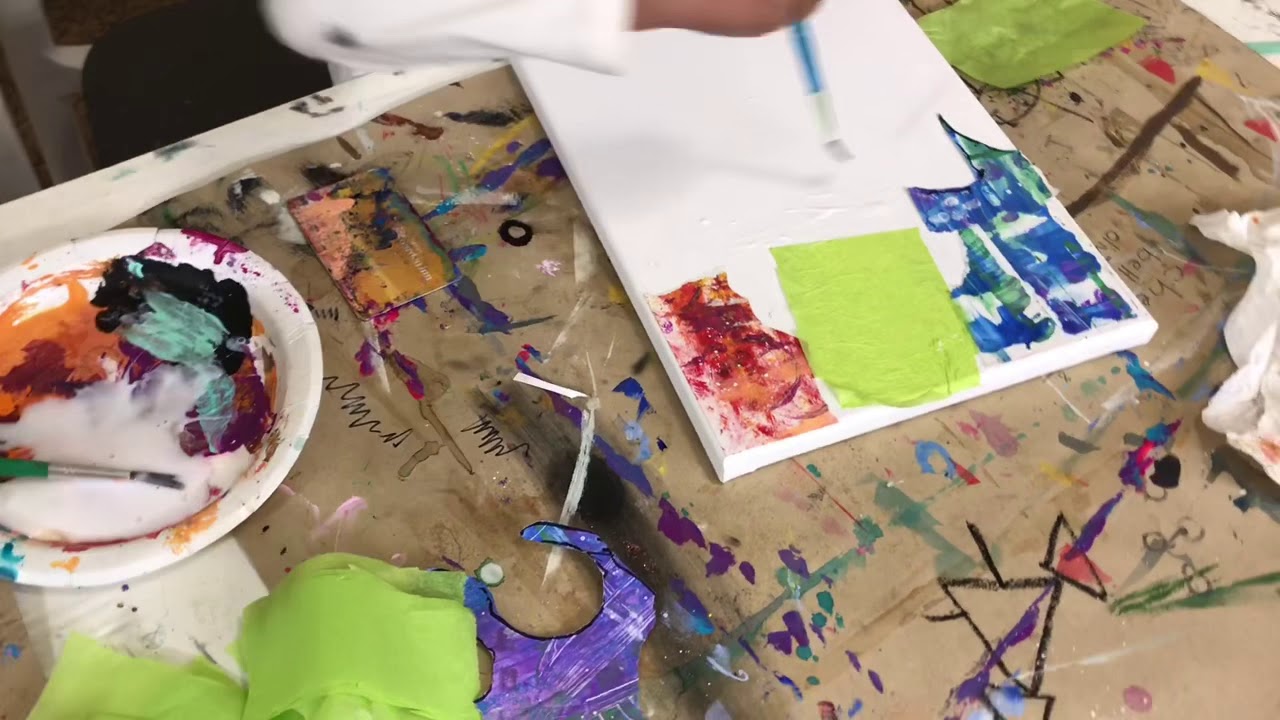Mixed Media Art for Kids Ideas
Merge collage with paint, ink with watercolors, and other combinations of art materials that spark the imagination.
Break out the art supplies and encourage kids’ creativity with projects that combine two or three media, or art materials. Learning how to layer different items also develops problem-solving skills. The key is to have a sturdy enough surface to work on that will support the extra weight of different supplies. Children need the patience to allow different layers to dry before continuing with the artwork.
Mixed Media Materials
Depending on the materials the children will use in creating their work, they will want heavy watercolor paper, canvas panels, or any paper suggested for use with acrylic or oil paints (even if they won’t be using these paints the surfaces will be sturdy enough to hold the different layers without bending or folding).
https://www.youtube.com/watch?v=36moUfEN9bY
Anything can be used in mixed media art – acrylic paints, poster paints, watercolor paints, chalk pastels, oil pastels, magazines and postcards, photographs, aluminum foil, colored tissue paper, gift wrapping paper, beads, feathers, old jewelry, rhinestones, and sequins, ribbon, yarn, etc. The goal is to create an interesting visual image.
Mixed Media Ideas
When creating mixed media artwork, children will want to position thinner layers first and then place the heaviest materials on top. Before starting a piece of art, children will want to think through a couple of things. One thing they should think about is what materials they have available and what they want to use. It helps to gather materials and have them nearby.
Another thing that young artists will want to consider is the color scheme of their project. Projects that use different tints and shades of the same color are an easy way to coordinate a piece. The color of the piece of artwork is important because it will help to bring cohesiveness to what could otherwise be seen as a mish-mash of stuff stuck onto a canvas panel.
Mixed Media Techniques
Children will want to start with the lightest layer first. That means that they should start by painting or coloring the background. This doesn’t require using one color to cover the entire background. They can start by coloring patterns, geometric shapes, or blocks of colors. Their goal is to cover the entire page or board with color.
Allow the paint to dry completely. Next, consider adding collage elements with cut-up photographs, magazine pictures, or gift-wrapping. Glue thin layers of colored tissue over the first layer, allowing the colors to show through and mix to create new colors. Elements like colored tissue, plastic wrap, and aluminum foil can be crumpled to add visual interest through texture.
The last things to add to the artwork are the heaviest pieces, the elements that will stick out from the paper or canvas. Apply things like pieces of jewelry, ceramic tiles, and yarn to the outermost layer. Consider adding tempera and acrylic paints over some of those elements to tie the top layer in with the bottom layer.
Mixed media allows children to explore their creativity by playing with different colors and textures while creating a unique piece of artwork. By layering different materials, children also engage in problem-solving, learning how to combine and anchor items.
